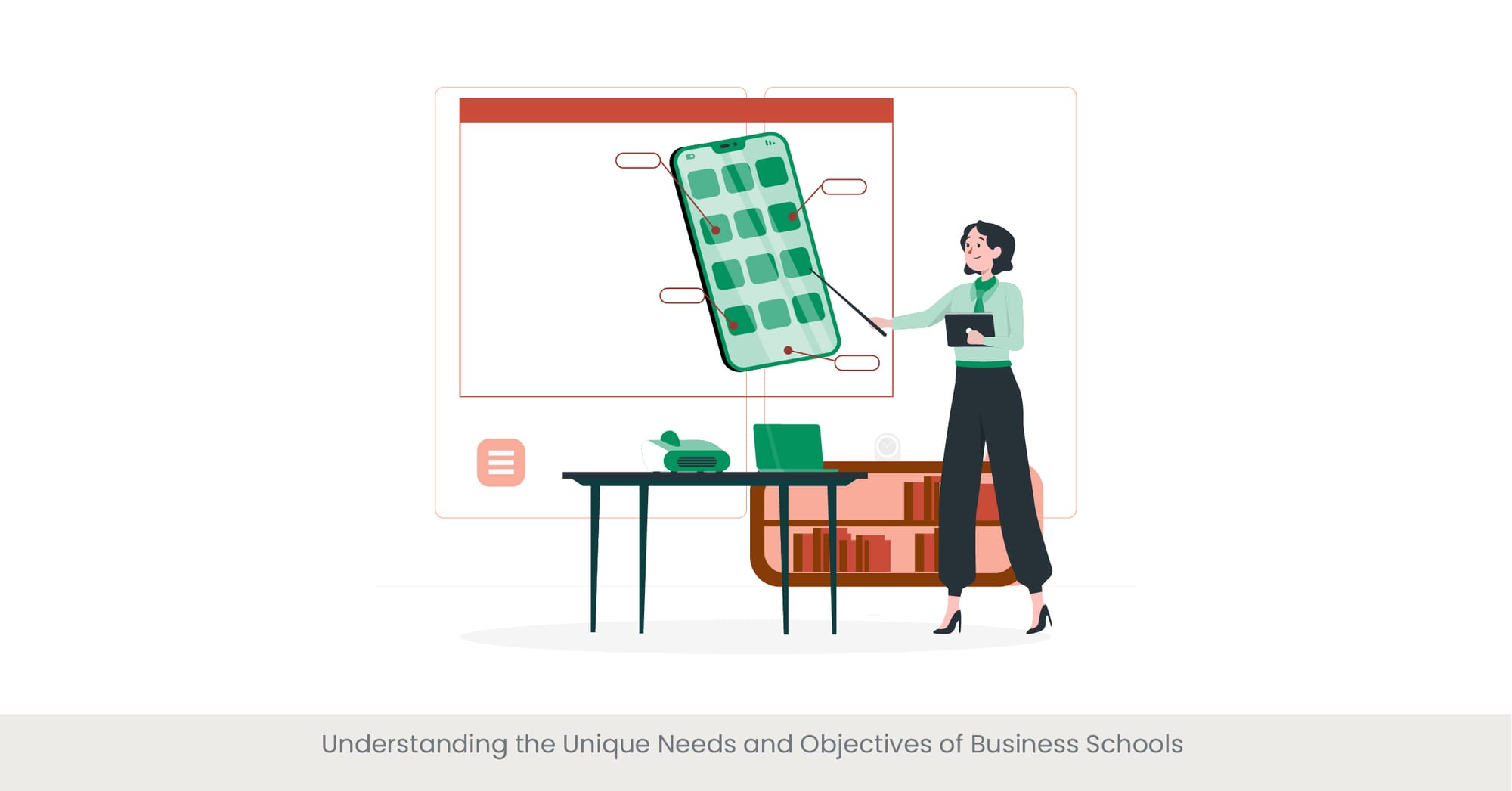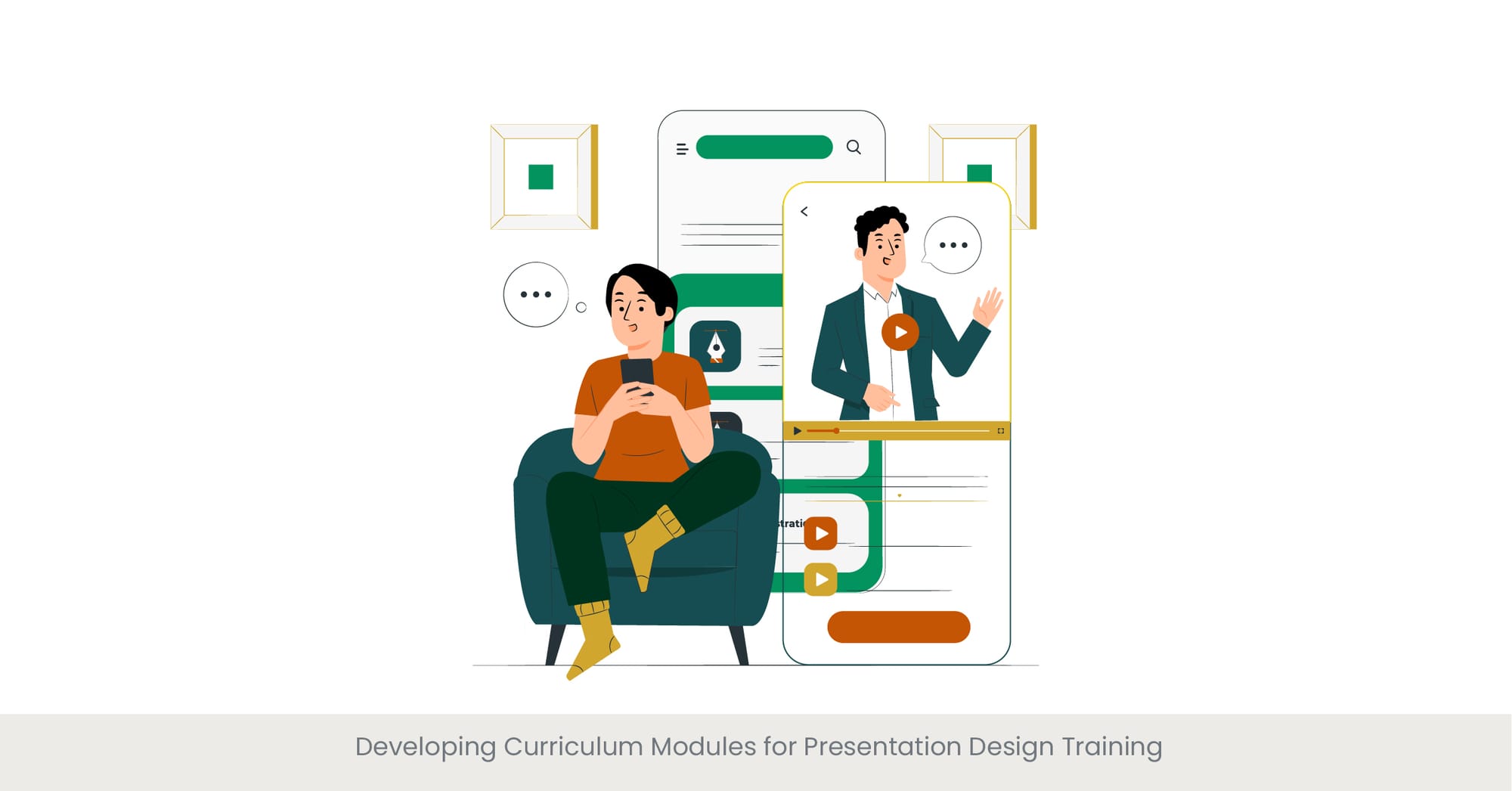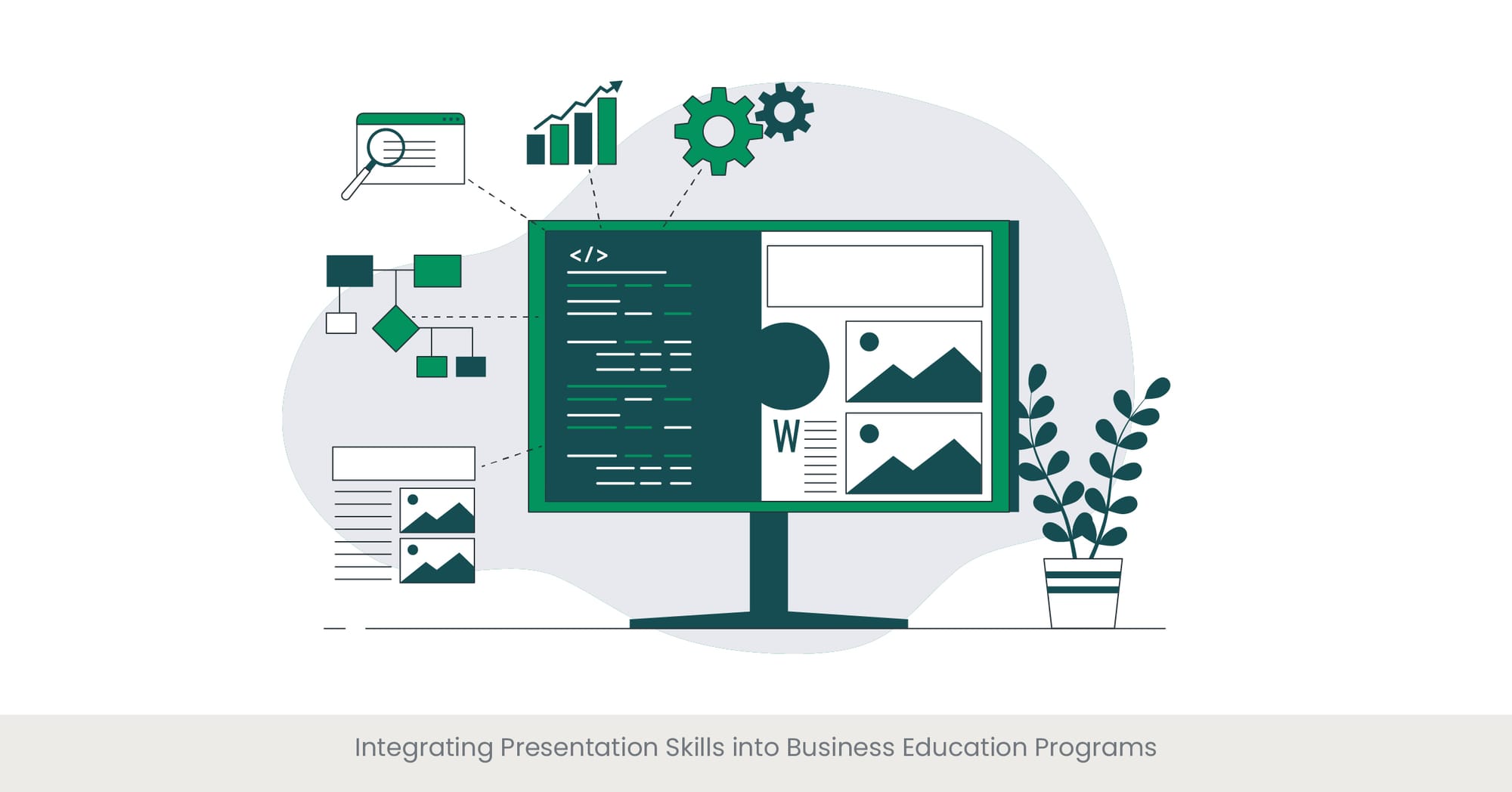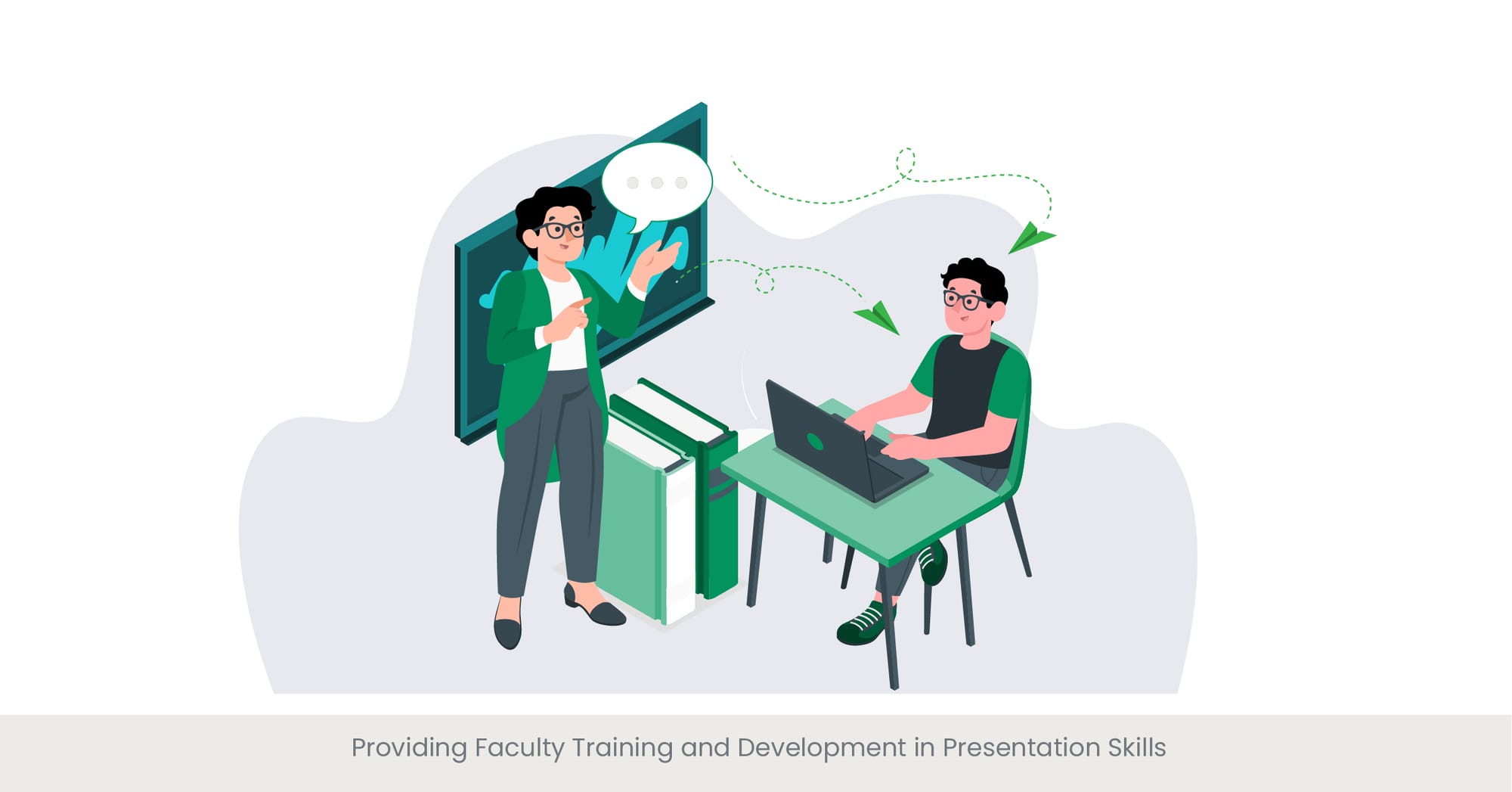
Understanding the Unique Needs and Objectives of Business Schools

Introduction: Tailoring Training to B-School Dynamics
Business schools (B-Schools) have distinctive educational objectives and needs that differ significantly from other academic environments. Understanding these unique aspects is crucial for designing effective custom training programs that enhance both instructor teaching quality and student learning experiences in business education.
Background: The Specialized Focus of Business Schools
Business schools aim to prepare students for the challenges of the business world by emphasizing practical skills like leadership, communication, organization, and strategic thinking. The curriculum is often a blend of theoretical knowledge and practical application, requiring specialized training approaches that align with these educational goals. This necessitates a thorough understanding of the b-school’s mission, the career trajectories of its students, and the industry demands that shape its programs.
Real-World Applications: Adapting Training to Meet Specific Needs
For instance, a top-tier business school might focus heavily on entrepreneurship and innovation, requiring customized training courses and modules in these areas to enhance their presentation and pitching skills. Incorporating real-world business scenarios and challenges into the training helps prepare students for what they will face after graduation, making the learning process more relevant and impactful.
References and Validation
Studies from educational bodies such as the AACSB (Association to Advance Collegiate Schools of Business) show that tailored training programs that address specific learning outcomes can improve student engagement and achievement significantly. For example, programs focused on enhancing presentation skills in MBA students have demonstrated improved success in job placements and professional presentations, as reported in recent journals on education and business training.
Developing Curriculum Modules for Presentation Design Training

Introduction: Crafting Specialized Training for Effective Presentations
In the competitive environment of business schools, the ability to design and deliver compelling business presentations is a critical skill for students. Developing curriculum modules specifically for presentation design training equips students with the necessary tools and techniques to effectively communicate their ideas in the business world.
Background: Importance of Presentation Design in Business Education
Presentation design involves more than just creating visually appealing slides; it requires an understanding of how to organize information, use visual aids effectively, and engage an audience. Business schools must integrate these skills into their curriculum to ensure that their graduates can stand out in presentations, whether pitching ideas to potential investors or delivering strategic plans to stakeholders.
Real-World Applications: Curriculum Integration Examples
An example of effective curriculum integration can be seen at a leading B-School, which introduced a series of modules on presentation design as part of its core MBA program. These modules cover everything from basic design principles to advanced techniques in visual storytelling slide design and data representation slide design, using popular presentation software platforms like PowerPoint and Keynote. The training includes hands-on projects where students must develop and present business cases to their peers, simulating real-world business scenarios.
References and Validation
Research published in the "Journal of Business Communication" highlights the positive impact of specialized presentation design training on student outcomes, noting a marked improvement in their ability to convey complex information succinctly and persuasively. Further, feedback from alumni indicates that these skills have significantly boosted their confidence and effectiveness in professional settings, particularly in client-facing roles.
Integrating Presentation Skills into Business Education Programs

Introduction: Embedding Presentation Skills in the Curriculum
Incorporating presentation skills into business education programs is crucial for preparing students to meet the communication demands of the modern business environment. By embedding these skills into the curriculum, business schools ensure that students develop not only their analytical capabilities but also their ability to effectively articulate and present their ideas.
Background: The Scope of Presentation Skills in Business Education
Presentation skills encompass a range of competencies from structuring and designing slides to mastering public speaking and audience engagement. Integrating these skills into business programs involves curriculum development that spans across various subjects, ensuring that students can apply these skills in different contexts, from marketing to finance.
Real-World Applications: Successful Integration Strategies
For example, a well-known business school has integrated presentation skills training into its curriculum by requiring students to complete several presentation-centric assignments throughout their courses. This includes capstone projects that culminate in a presentation to industry leaders, providing real-world experience and feedback. Additionally, the school hosts annual presentation competitions, encouraging students to innovate and refine their presentation skills courses more competitively.
References and Validation
According to a study by the Educational Testing Service, students in class who participated in courses with integrated presentation skills showed a 25% improvement in their communication scores compared to those in class who did not. Feedback from employers and colleagues also suggests that graduates from programs with strong presentation training are more effective communicators, which significantly enhances their employability and career advancement.
Providing Faculty Training and Development in Presentation Skills

Introduction: Enhancing Teaching Effectiveness Through Presentation Skills
Faculty members play a pivotal role in the educational experience at business schools, and their ability to create and to deliver content effectively is crucial. Providing training and development in presentation skills for faculty can significantly enhance the quality of education, making learning more engaging and effective for students.
Background: The Need for Skilled Presenters in Academia
Effective presentation skills in academia are not just about conveying information but also about inspiring and motivating students. Faculty who are adept at presenting can better communicate complex concepts and engage a broader range of learners. Thus, training programs for faculty should focus on both the pedagogical aspects of presentation and the technical skills of using modern presentation tools and software.
Real-World Applications: Faculty Development Programs
Several leading business schools have implemented faculty development programs that include workshops and seminars on presentation skills. For instance, a program might cover topics such as crafting compelling narratives and stories, using visuals effectively, and engaging students through interactive elements. These programs often incorporate peer reviews and feedback sessions to foster a culture of continuous improvement.
References and Validation
Studies have shown that faculty development programs focusing on presentation skills lead to higher student satisfaction and better learning outcomes. For example, research published in the "Academy of Management Learning & Education" journal found that students in classes taught by instructors who underwent presentation skills training reported a 30% increase in the clarity and impact of lectures. Additionally, these instructors were more likely to incorporate diverse teaching methods and multimedia resources into their classes, enriching the learning environment.
Incorporating Case Studies and Real-World Examples into Training

Introduction: Bridging Theory and Practice
Incorporating case studies and real-world examples into business school training is essential for translating theoretical knowledge into practical skills. This approach helps students understand the complexities of real business environments and develop critical thinking and problem-solving skills.
Background: The Value of Experiential Learning
Case studies provide a framework for experiential learning by allowing students to analyze and respond to real-life business scenarios. This method not only enhances learning retention but also encourages students to apply conceptual knowledge to solve practical problems. Real-world examples further enrich this learning process by demonstrating the application of theories in actual business settings.
Real-World Applications: Effective Implementation in Business Schools
A prominent example is the use of a comprehensive case study in a strategic management course, where students assess the business strategies of a leading multinational corporation and explore and propose solutions for its challenges. This case study course is supplemented with guest lectures from industry experts experienced professionals who discuss relevant challenges and trends in the sector, providing students with insights that bridge academic knowledge with industry practices.
References and Validation
According to a study by the Harvard Business School, the use of case studies and real-world examples in class significantly improves students' analytical skills and their ability to think critically under pressure. Feedback from students indicates that these methods make classes more engaging and relevant, providing them with a clearer understanding of how to apply what they learn in real-world contexts.
Offering Guest Lectures and Workshops by Industry Experts

Introduction: Enriching Education with Industry Insights
Introducing guest lectures and workshops led by industry experts into business school programs provides students with unique perspectives and insights that are crucial for their professional development. These sessions and instructors offer an invaluable connection to explore and discover the real-world applications of their studies and expose them to current trends and challenges in the business world.
Background: The Impact of External Expertise in Business Education
Guest lectures and workshops bring fresh viewpoints and specialized knowledge into the classroom, offering students firsthand experiences from those actively engaged in the industry. This practice not only diversifies the learning content but also enhances the credibility of the educational program by demonstrating its relevance and connection to the professional world.
Real-World Applications: Implementing Industry-Specific Learning Opportunities
For example, a business school might host a series of workshops on digital marketing innovations led by a leading expert from a major tech company. These sessions can include hands-on activities, such as analyzing current market data or creating digital campaigns, providing students with practical skills and direct insights into the industry's best practices and current standards.
References and Validation
Feedback from students and faculty shows that guest lectures and workshops significantly enhance the learning experience. A study published in the "Journal of Business Education" noted that students who participated in these sessions reported a greater understanding of their field and felt more prepared for their careers. Additionally, surveys indicate that these engagements lead to higher student satisfaction with class, and increased interest in the subjects covered in online course.
Aligning Training with Accreditation and Curriculum Standards

Introduction: Ensuring Educational Excellence
For business schools, aligning training programs with accreditation standards and curriculum guidelines is crucial to maintaining educational quality and credibility. This alignment guarantees that the training provided meets the highest educational standards and fulfills the requirements set by accrediting bodies.
Background: The Role of Accreditation in Business Education
Accreditation bodies, such as AACSB (Association to Advance Collegiate Schools of Business) and EQUIS (European Quality Improvement System), set rigorous standards to ensure that business schools provide a high-quality education that is relevant to the needs of the business world. These standards typically cover areas such as curriculum content, faculty qualifications, student learning outcomes, and institutional development.
Real-World Applications: Practical Compliance and Implementation
An example of aligning training with standards can be seen in a business school that revised its MBA program to include more experiential learning projects and intercultural communication modules, in response to updated AACSB standards emphasizing practical skills and global awareness. The school also regularly reviews its courses and pedagogical approaches to ensure they meet evolving standards and industry expectations.
References and Validation
Studies indicate that business schools accredited by recognized bodies tend to have better student outcomes, including higher employment rates and greater satisfaction with the education received. A report from AACSB shows that accredited institutions see a 20% higher rate of graduate employment compared to non-accredited schools, underscoring the importance of alignment with accreditation standards.
Assessing Student Learning Outcomes and Skill Development

Introduction: Measuring Educational Impact
Assessing student learning outcomes and skill development is essential for business schools to ensure that their educational offerings are effective and meet the intended educational goals. This evaluation helps schools to refine their curricula and teaching methods continuously, enhancing student preparedness for the business world.
Background: The Importance of Learning Assessment
Effective assessment strategies provide critical data that help educators understand whether students are acquiring the necessary skills and knowledge. These assessments can be formative, providing ongoing data and feedback during the course, or summative, evaluating student understanding at the end of a course or program.
Real-World Applications: Implementing Robust Assessment Techniques
Many business schools employ a mix of direct and indirect assessment methods to gauge student learning. For example, direct methods might include capstone projects and standardized tests, while indirect methods could involve surveys and interviews with students and alumni. These diverse approaches allow for a comprehensive understanding of how well students are grasping critical business concepts and applying them in practical settings.
References and Validation
Research from the Educational Testing Service shows that schools that implement systematic assessment processes have higher rates of student success and satisfaction. Further, accreditation reports often highlight the correlation between rigorous assessment methods and improved educational outcomes, demonstrating the effectiveness of these practices in fostering significant learning achievements.
Providing Career Development Support Through Presentation Training

Introduction: Enhancing Career Prospects with Presentation Skills
Effective presentation skills are critical for career success in the business world. By integrating presentation training into career development programs, business schools can equip their students with the necessary tools to excel in professional settings, enhancing their employability and career progression.
Background: The Importance of Presentation Skills in Professional Growth
Presentation skills are essential not only for job interviews and pitching ideas but also for daily communications within a company. These skills help professionals clearly articulate their thoughts, persuade others, and convey their value to potential employers and stakeholders. As such, business schools play a crucial role in developing these competencies, which are highly valued in the job market.
Real-World Applications: Career Services Incorporating Presentation Training
Many business schools have incorporated presentation training into their career services by offering workshops and individual coaching sessions focused on improving presentation and public speaking skills. For example, students might participate in mock interviews where they present their projects or ideas, receiving feedback on both their content and delivery techniques. This preparation significantly improves their confidence and performance in actual job interviews and professional presentations.
References and Validation
Studies have shown that students who receive formal training in presentation skills are 40% more likely to secure job offers than those who do not. Furthermore, a survey among corporate recruiters indicates that presentation skills are among the top five competencies sought in new hires, highlighting the importance of these skills in career development programs offered by business schools.
Cultivating a Culture of Effective Communication and Leadership in B-Schools

Introduction: Building Foundational Leadership Qualities
In business schools, fostering a culture of effective communication and leadership is essential for preparing future business leaders. This cultural foundation not only enhances the educational experience but also prepares students to be effective communicators and leaders in their professional careers.
Background: The Role of Communication in Leadership Development
Effective leadership is closely tied to effective communication and team together. Leaders must be able to articulate visions, communicate well, inspire teams, negotiate successfully, and manage conflicts, all of which rely heavily on excellent communication skills with colleagues and team together. Business schools that emphasize these skills in their curricula help to cultivate a new generation of leaders who are prepared to handle the complexities of the modern business world.
Real-World Applications: Leadership and Communication Programs
Many business schools implement specialized programs and activities that promote leadership and communication. For example, leadership retreats, debate clubs, and role-playing simulations are common methods used to enhance students' communication skills. These programs are often integrated with real-world leadership challenges, providing practical experience and fostering a proactive learning environment.
References and Validation
Research indicates that business schools with strong leadership and communication programs report higher student satisfaction and better job placement rates. According to a study in the "Journal of Business Leadership," graduates from schools with comprehensive communication and leadership training are 30% more likely to attain senior management positions within five years of graduation compared to those from schools without such training.
Frequently Asked Questions
How do you train for a presentation?
Training for a presentation involves understanding your audience, structuring your message and content clearly, designing effective slides, and practicing your delivery. Incorporating feedback from practice sessions and refining your presentation based on this feedback are also crucial steps.
Which course is best for presentation skills?
The best course for presentation skills typically includes components on public speaking, visual design, audience engagement tactics, and handling questions effectively. Look for courses online that offer practical exercises and personalized instructor feedback.
Where to train for public speaking?
Training courses for public speaking can be found online, at business schools, professional development centers, and through online platforms that offer specialized online courses. Programs like Toastmasters are also excellent for ongoing practice and feedback.
How do you teach students presentation skills?
Teaching presentation skills involves a combination of theoretical instruction and practical application. Students should be given opportunities to practice presenting, receive constructive feedback, create and observe effective presentations modeled by instructors or peers and gain more.
What are the 4 principles of presentation design?
The four principles of presentation design are clarity, consistency, focus, and engagement with audiences. These four presentation design principles ensure that presentations are easy to follow, aesthetically coherent, centered on key messages, and capable of keeping the audience interested.
How do I become a presentation designer?
To become a presentation designer, start by learning key design software like PowerPoint or Keynote, study principles and fundamentals of graphic design, create, and gain some practice by creating various types of presentations online. Professional courses or degrees in graphic design or communications can also be helpful.
How do you create a presentation design?
Creating a presentation design involves selecting a suitable template or creating a custom layout, organizing content logically, using visuals like images and charts to support your points, and of course ensuring the design is aligned with the branding and purpose of the team, project or presentation.
What do you need to be a presentation designer?
A presentation designer needs a good eye for visual design, proficiency in presentation software, understanding of color theory slide design and typography, and the ability to translate complex data into understandable visual formats. Strong communication skills are also essential to slide design.
What are the 5 P's of presentation skills?
The 5 P's of presentation skills are Prepare, Practice, Present, Polish, and Post-evaluate. This framework guides presenters through the process of preparing their content for engaging presentations, planning and practicing their delivery, presenting effectively, refining their presentation skills courses others, and evaluating their performance to learn from each experience.



%20(1).jpg)
%20(1).jpg)


